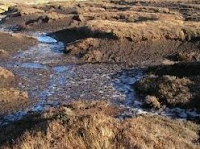Defra ran a consultation for the 12 weeks up to 4 May 2010 that sought views on how the Directive on the Sustainable Use of Pesticides (Directive 2009/128/EC) should be implemented.
The most significant part of this Directive for the Trust is Article 9 that deals with aerial application of pesticides, important in connection with bracken control. The full summary of the Consultation can be found on Defra's website - page 28 covers aerial application.
Article 9 requires Member States to prohibit the use of aerial applications and permit such use only when a series of conditions have been met or are present. The Directive also requires Member States to: identify a competent authority responsible for considering and approving applications to carry out aerial spraying operations, establishing procedures for considering and notifying the outcome of requests and making records available to the public; establish a monitoring system to ensure that the conditions under which the approval to spray have been met; and ensure that from 2013 aircraft are fitted with accessories that constitute the best available technology to reduce spray drift.
Defra has concluded that the responsible application of pesticides by aerial spraying does no pose an unacceptable risk to human health or the environment and, consequently, the derogation to allow aerial spraying will be used. The existing legislative control regime is believed to provide a basis for meeting the requirements of the Directive and this will be adapted to ensure the continuation of properly regulated aerial applications, through a consent-based approach.
In summary, bracken control by aerial application of Asulox will remain possible.



























